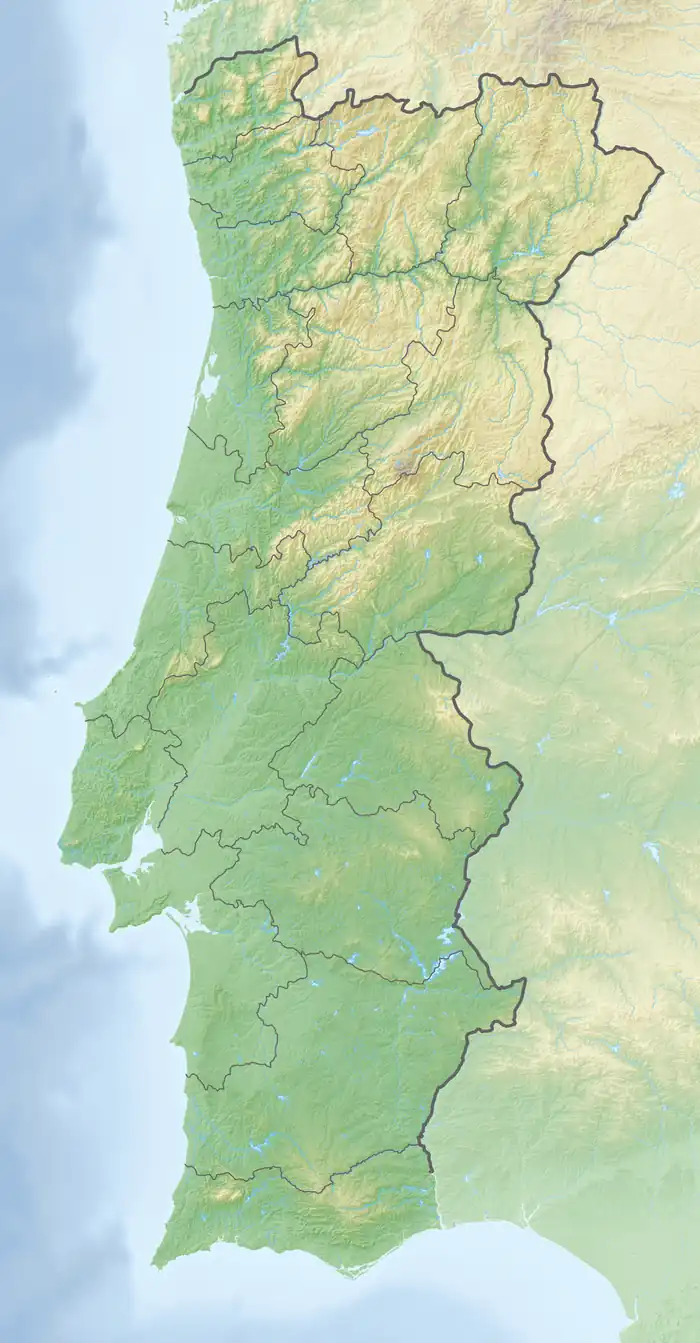São Gião Radio Telescope
The São Gião Radio Telescope is situated in the parish of São Gião Portugal. It was constructed in 2015, with first light in December 2015.[1] The gregorian telescope has a diameter of 9.3 m. As of 2019 it is the biggest radio telescope in mainland Portugal. Two 3 phase motors drive the azimuth and elevation (or altitude) servo systems with an accuracy of 0.01 degree. The main reflector has a solid reflector surface that makes it suitable for observations of high frequencies up to 22 GHz.[2]
 São Gião Radio Telescope | |
| Location(s) | São Gião, Oliveira do Hospital, Coimbra District, Portugal |
|---|---|
| Coordinates | 40°19′49″N 7°48′47″W |
| Altitude | 704 m (2,310 ft) |
| Telescope style | radio telescope |
| Diameter | 9.3 m (30 ft 6 in) |
| Website | www |
 Location of São Gião Radio Telescope | |
| | |
It is used to observe the hydrogen line from our galaxy and maser signals from star-forming regions and late evolution AGB or OH/IR stars.[3] The frequencies used for the hydrogen line is 1.42 GHz and maser signals are measured on 1.612,[4] and 12 GHz[5] The data results obtained with the telescope were presented on EUCARA 2016 Dwingeloo Netherlands [6] and on the ASTROFESTA 2018 in Constancia Portugal.[7][8] The telescope data and methods are also referenced by universities like the Western Kentucky University,[9] and societies like Ofiuco[10] and the Society of Amateur Radio Astronomers.[11]
A report from the Correio da Beira Serra newspaper about the São Gião radio telescope, can be consulted here.
References
- "First light of the Sao Giao Radio Telescope of H1". Retrieved 2019-01-07.
- "Project MK27: Capturing water masers on 22 GHz with the Săo Giăo Radio Telescope". Retrieved 2022-11-30.
- "Late evolution of low- and intermediate-mass stars" (PDF). Retrieved 2019-01-08.
- "Masers; the OH molecule detection in NML cygni / OH80.8-1.9". Retrieved 2019-01-07.
- "Complex object W3(OH) at methanol line CH3OH at 12.178 GHz". Retrieved 2019-01-07.
- "Michiel Klaassen – Disassembly, re-construction and first light of a 9.3m radio telescope". Retrieved 2019-01-09.
- "The São Gião Radiotelescope and the origin of matter". Retrieved 2019-01-09.
- "Agosto é o mês dos astros em Portugal". Retrieved 2019-01-09.
- "Sao Giao Radio Telescope (PARAC)". Retrieved 2019-01-09.
- "PARAC (Portugal Amateur RadioAstronomy Center)". Retrieved 2019-01-14.
- "SDR Radio Project Sites". Retrieved 2019-01-14.